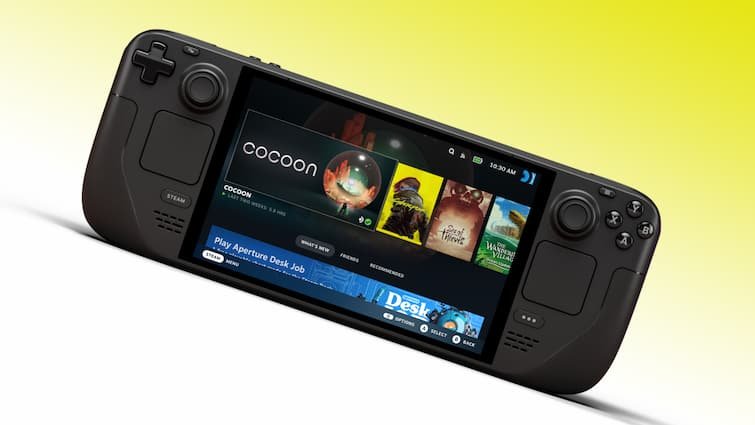
Every gamer yearns for their dream setup. And for many, that includes a top-of-the-line PC, fitted with all the latest bells and whistles to make even the most demanding AAA title sing. However, some games look for something different and so they choose to embark instead on the never-ending journey towards ultimate portability. The Nintendo Game Boy, Nintendo DS, and PlayStation Portable are just a few products they could pick up in this seemingly endless pursuit.
Portable gaming is something players have loved for as long as this author can remember. The ability to play games wherever and whenever one wants has always been one of its greatest appeals.
What started with retro consoles like the Game Boy, has now expanded to a scale never before seen.
Today, the market is full of portable gaming handheld options like the Steam Deck, Lenovo Legion Go, Asus ROG Ally, Logitech G Cloud, and many more.
But how do these stack against the good old gaming PC? Let’s find out.
The Steam Deck Revival
The launch of the Steam Deck was the revival that the gaming handheld needed. Its attractive features, comfortable design, powerful hardware, and excellent price-to-value proposition made it an instant favourite among gamers.
The Steam Deck also set a precedent of easy customisation and self-repair which is a feature that PC gamers have enjoyed for a long time.
The concept of a portable gaming PC had existed before the Steam Deck, but no one had been able to execute it as well before.
The Steam Deck showed consumers that a portable gaming PC is viable.
The Handheld Revolution
The Steam Deck sparked a movement in the gaming industry which inspired companies like Ayaneo, Asus, Logitech, and Lenovo to enter the handheld gaming race.
Each company has tried to put its own twist on the gaming handheld.
Lenovo’s Legion Go has detachable controllers, the Logitech G Cloud is an Android-based system which boasts cloud gaming capabilities and the Ayaneo Flip DS, a dual-screen handheld, banks on the nostalgia surrounding the Nintendo DS.
With The Good Comes The Bad
Newer handhelds are often more expensive and powerful than the Steam Deck. While this proportion of price to performance might seem reasonable at first glance, you won’t feel the same way when you realise that some of these newer systems lie in price ranges of Rs 50,000 – Rs 80,000 and beyond.
At such prices, it feels more appropriate to purchase a laptop or low-end gaming PC which might be less portable but offers better performance and the best bang for your buck.
However, high prices aren’t the only drawback that these devices have.
Handhelds’ performance is understandably not on par with a similarly priced gaming PC but that is still acceptable because a smaller screen requires less powerful hardware to make the game look good.
What is harder to swallow is the low battery life that these devices are sporting.
It is improving gradually with the creation of more efficient processors but older systems like the Steam Deck only have a playtime of around two hours when it comes to performance-heavy games.
PC Vs Handheld
So, what is the perspective of a PC gamer when it comes to the current state of the gaming handheld? I believe it depends purely upon different use cases.
If you have a lifestyle which allows you to spend a lot of time at home, a PC is the most cost-effective option for you. It performs well for many years and any snags can usually be resolved by swapping out a single component instead of replacing the entire system.
On the flip side, they are the least portable because they require an external display and peripherals as well. Still, they are perfect for people who live in a single location for extended periods or work from home.
On the other hand, the charm of a good gaming handheld is something not even a PC gamer like me can deny.
Getting cosy in bed with a good indie game is equivalent to months of therapy. And the ability to carry your games with you no matter where you go is extremely satisfying.
While the battery life may not be perfect, it has gotten better and will continue to improve in the future as well.
The biggest problem once again is the price. The near-perfect price-to-performance ratio achieved by devices like the Steam Deck needs to serve as inspiration for future gaming handhelds.
Final Verdict
Both options are extremely enticing. Being an early adopter of any new technology always comes with its risks. But there is also a chance that you might stumble upon something amazing.
Both options have their benefits, but I think I’ll stick with my trusty PC rig for now because it provides me with a level of consistency that a gaming handheld cannot at the moment.
However, I will acknowledge that some years down the road, newer gaming handhelds will have the possibility of giving my PC a run for its money.






